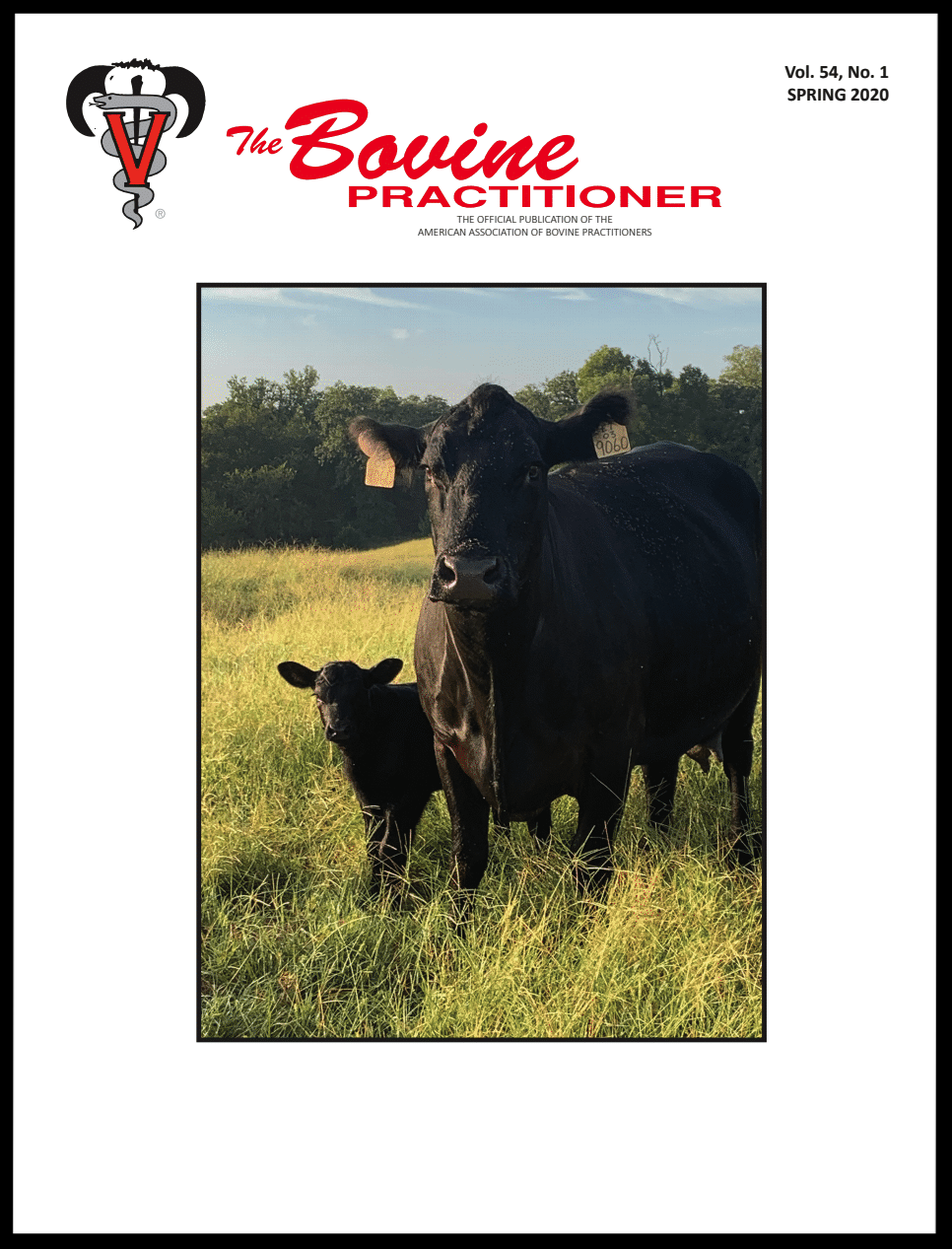Isolation of Trichophyton spores from lesions typically classified as resolving in cattle
DOI:
https://doi.org/10.21423/bovine-vol54no1p36-40Keywords:
Trichophyton verrucosum, ringworm, cattle, dermatophytosisAbstract
Dermatophytosis is an important zoonotic superficial mycosis of cattle, primarily caused by the dermatophyte Trichophyton verrucosum. T. verrucosum presents a signifi-cant public health risk in the United States. The presence of dermatophyte lesions does not necessarily preclude issuance of certificates of veterinary inspection, and are permitted in some livestock shows and exhibition cattle if the inspecting veterinarian observes hair regrowth within the lesion. The objective of this study was to evaluate dermatophyte lesions, both without hair (alopecic or active) and with hair regrowth (resolving), for presence of T. verrucosum spores in calves. Our hypothesis was that the regrowth of hair would not correlate with the absence of infective material. Of the 34 calves sampled, 23 of 34 of the haired/resolving lesions had spores present, while 14/34 of the alopecic/active lesions had spores present. The odds of a haired/resolving sample having spores present was found to be 4 times that of the odds of an alopecic/active sample having spores present (p-value = 0.03516, 95% CI: 1.07, 22.09). Resolving lesions, as evidenced by regrowth of hair, did not correlate with mycologic cure in this study as spores were still recovered in many lesions designated as haired/resolving.






